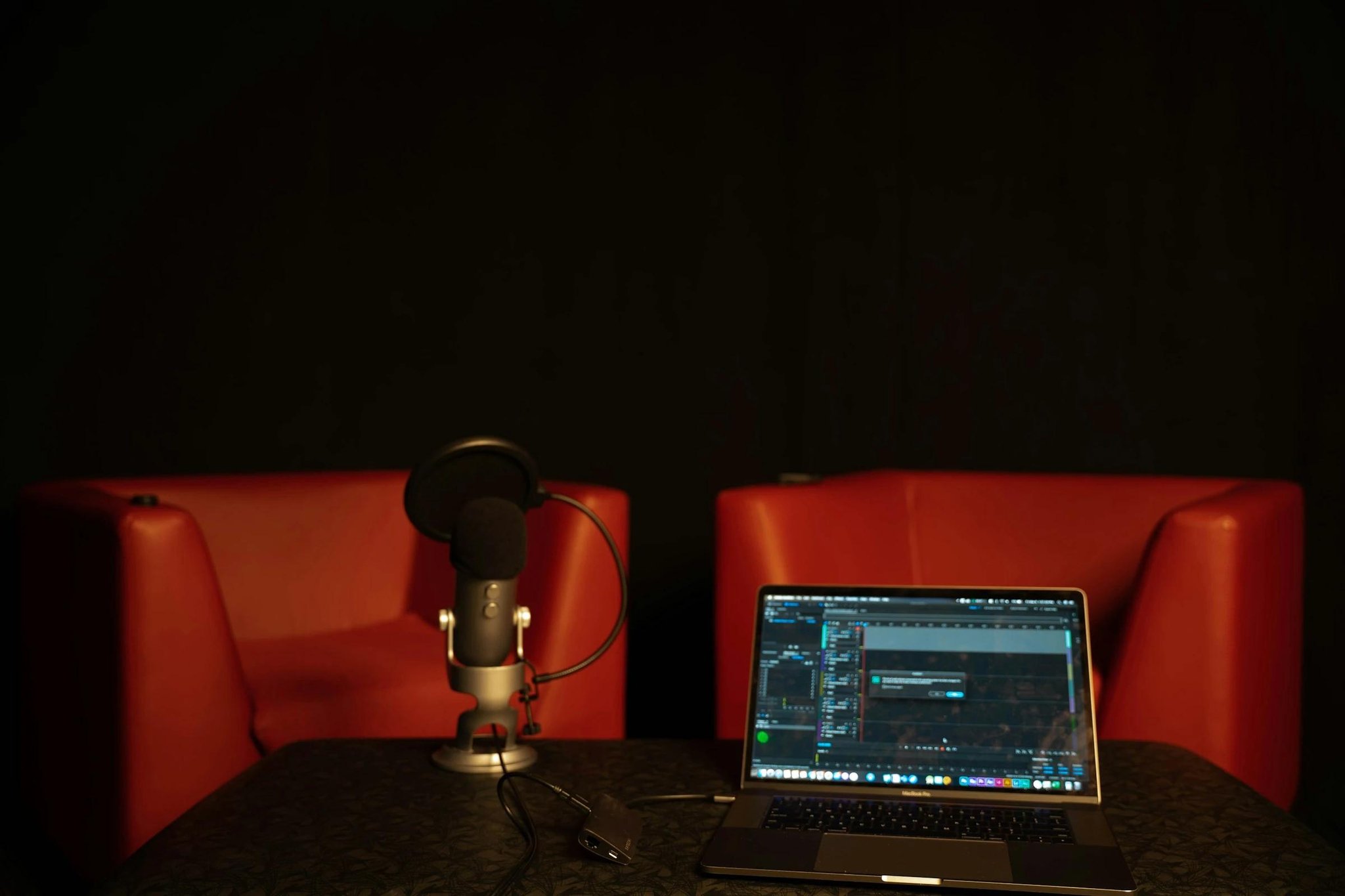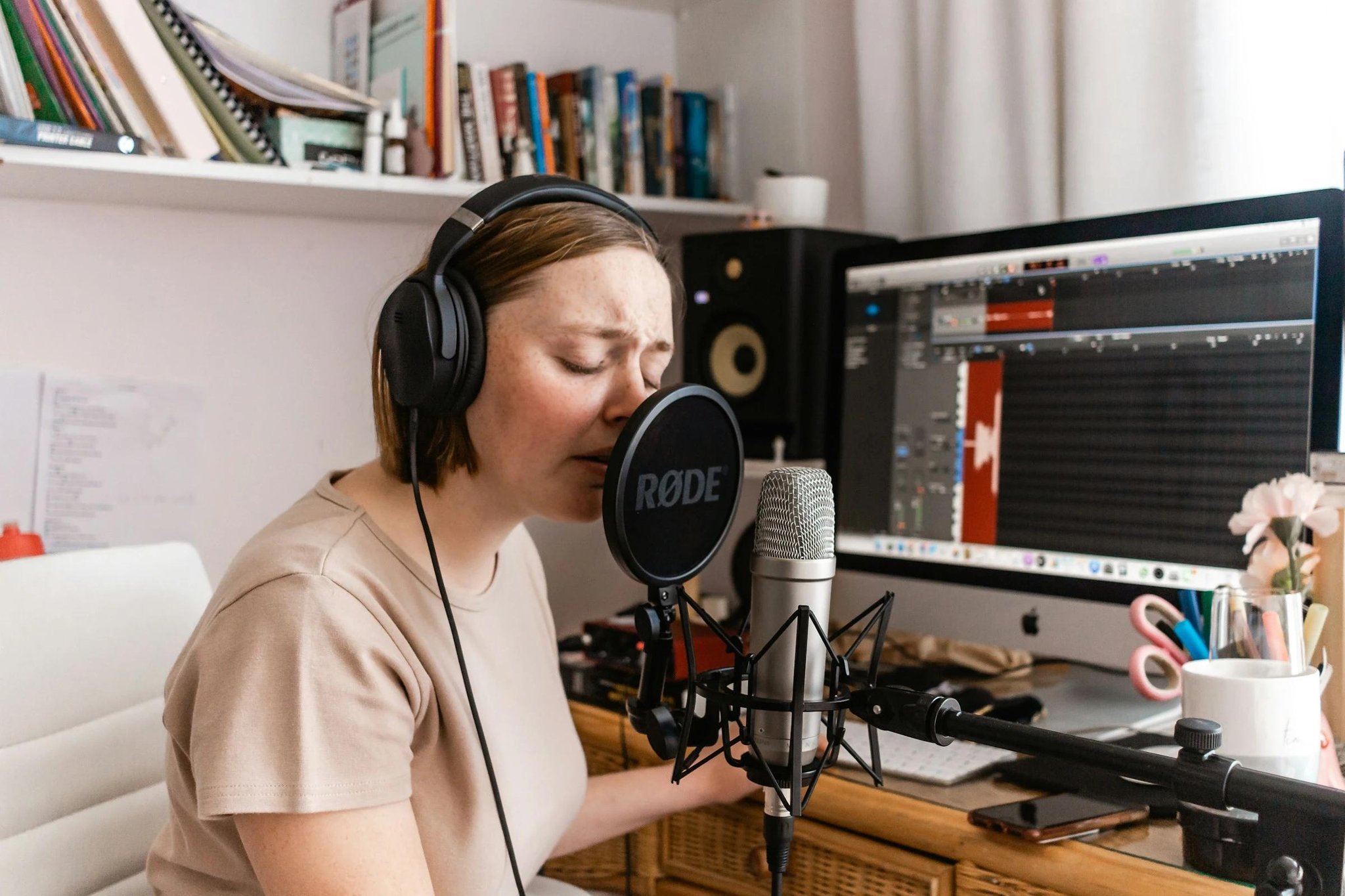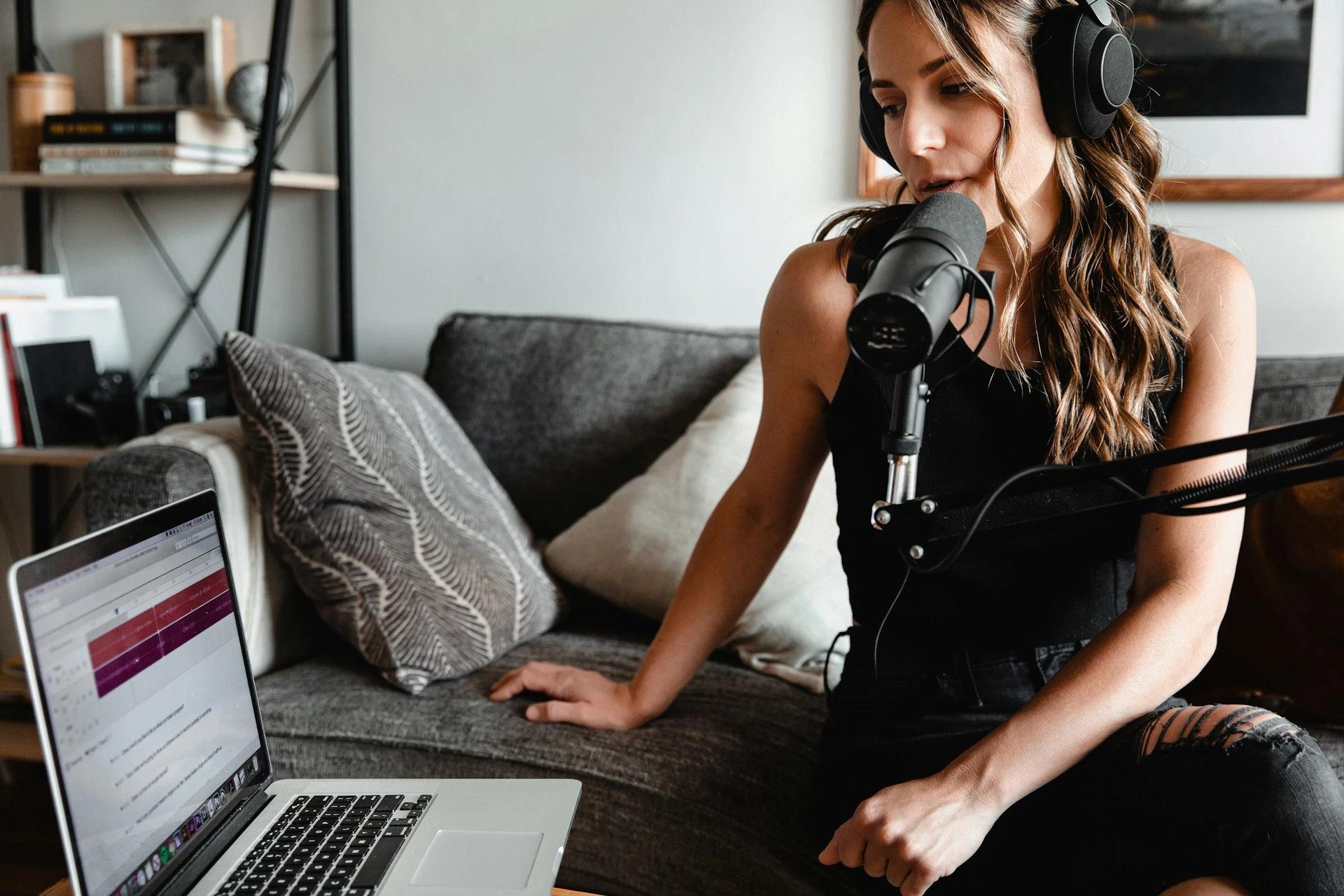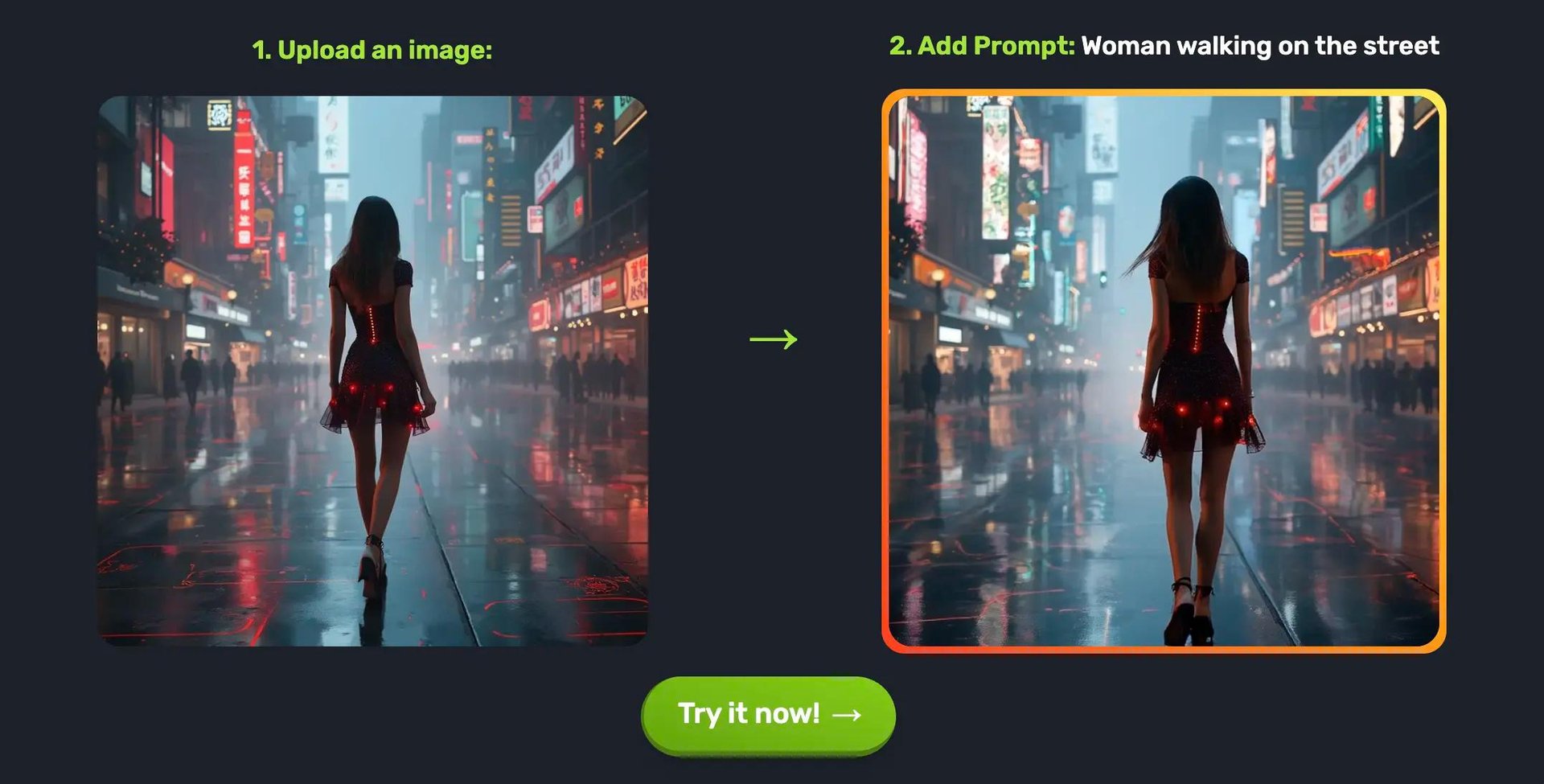What Is AI Music and How Does It Work?




Want to create AI song covers with your voice? Learn how to make AI music covers using top tools, artist models, and step-by-step tips.
Imagine scrolling through your social media feed only to see that a cover of your favorite song has gone viral. But this cover sounds nothing like the original artist. Instead, it sounds like a mash-up of multiple artists, some of whom are long gone. Then you realize that this cover was created by artificial intelligence. It's fascinating how far we've come with technology. Now, not only can we use AI to analyze our favorite songs, but we can also get the help of music artificial intelligence to create our music covers. If you want to learn how to make AI music covers, I can help. This article will teach you how to create standout AI music confidently covers that capture attention and go viral online.
SendFame's AI content maker is a powerful tool that will help you achieve your goals faster and easier, so you can focus on creating your next viral hit.

AI music covers are digitally recreated renditions of existing songs produced using artificial intelligence technologies. They differ from traditional covers performed by human artists.
Unlike conventional covers, which involve human musicians interpreting and performing a song anew, AI music covers leverage machine learning algorithms to analyze and replicate original tracks' musical and vocal elements. They often mimic the voices and styles of famous artists without their direct involvement. The core technologies enabling AI music covers include:
Voice cloning captures and reproduces the distinctive vocal traits of a specific singer or speaker. By analyzing extensive audio samples, AI algorithms build a detailed digital model of the person's voice, including unique elements such as:
This allows the AI to generate singing or speaking voices strikingly similar to the original artist, often indistinguishable to the human ear. In music production, voice cloning enables creators to replicate iconic voices or craft entirely new vocal performances without requiring the singer's physical presence.
This technology enhances creative possibilities and reduces the time and cost associated with traditional recording sessions.
Voice synthesis generates realistic vocal sounds from scratch or by modifying existing audio. Leveraging deep neural networks, voice synthesis systems can produce singing voices that embody the desired style, emotion, and articulation. Unlike simple playback of recorded samples, these models create dynamic vocal performances that can be adjusted in real time for:
This flexibility allows producers to tailor vocals precisely to the musical context, enabling transformations such as changing genres or moods while maintaining naturalness. Voice synthesis is essential for creating AI music covers that sound authentic and engaging.
Traditionally, text-to-speech technology converts written text into spoken words, primarily used for applications like virtual assistants or audiobooks. Nevertheless, advanced TTS models have evolved to support singing by integrating melody and rhythm alongside the lyrics.
These systems translate textual input into sung audio, carefully controlling pitch, timing, and vocal tone to produce coherent and musically accurate performances. Adapting TTS for singing enables AI to generate vocal tracks directly from lyrics without requiring pre-recorded samples, expanding creative freedom for musicians and producers.
This technology automates the vocal generation process, allowing for rapid creation of new songs or covers with customized vocal styles and languages.
These technologies are often integrated within sophisticated AI music cover APIs that process original audio inputs, extract musical features such as pitch, tempo, and timbre, and then reconstruct the song with transformations like genre shifts, vocal style changes, or instrumental rearrangements.
The underlying machine learning models typically involve deep neural networks, including:
The evolution of AI music covers has been marked by increasing hyperrealism, where AI-generated covers sound nearly indistinguishable from human performances. Early AI covers were rudimentary and often synthetic-sounding. Still, advances in training on vast datasets and improvements in neural network architectures have enabled the creation of covers with nuanced vocal inflections and expressive dynamics.
The trend suggests AI covers will become even more sophisticated, capable of producing entirely original compositions and performances that challenge traditional notions of creativity and authorship in music.

Creating AI music covers that capture attention and go viral requires combining technology, creativity, and savvy promotion. With the AI music industry projected to reach $6.2 billion in 2025 and AI-generated music boosting industry revenue by over 17% this year alone, the opportunity to leverage AI for viral music content has never been greater.
Here’s a detailed step-by-step guide to help you create AI music covers that stand out and have the potential to go viral:
The foundation of a successful viral AI music cover lies in your selected platform, which serves as the bedrock for your creative endeavors. Choosing the right AI music cover tool is crucial, and several key factors should guide your decision-making process. These include:
By carefully considering these elements, you can ensure that your AI music cover has the best chance of resonating with a broad audience and achieving viral success.
The first and most critical aspect of an AI music cover tool is user-friendliness. The platform should feature an intuitive interface, enabling creators of all skill levels to navigate its features easily. Whether you're a seasoned musician or a novice exploring the world of AI-generated music, the tool should offer a seamless and straightforward experience.
This accessibility empowers users to focus on their creative vision rather than grappling with complex technical hurdles, ultimately fostering a more enjoyable and productive creative process.
High-fidelity output is essential for engaging listeners and capturing their attention. The audio produced by the AI tool should closely mimic human nuances, delivering a listening experience that is both authentic and captivating. Listeners are more likely to connect with and share covers that exhibit a high degree of sonic quality, so be sure your AI music platform offers high-quality mastered tracks that save time and resources.
Access to diverse AI voice models unlocks creative flexibility and allows you to experiment with different sounds and styles. The platform should offer:
This helps tailor your AI music cover to suit your artistic vision. You can create unique and compelling covers that showcase your creativity and innovation by exploring different voice options.
Understanding the legal landscape of AI-generated music is crucial to avoid potential pitfalls. Ensure that the platform provides clear and comprehensive guidelines on copyright and licensing, outlining the rights and responsibilities of creators. Prioritizing legal clarity helps you create and share your AI music covers with confidence, knowing that you are operating within the bounds of the law.
Effortless Creation, Unique Sound, and Secure Licensing
SendFame excels in all these areas. Its interface is designed for ease of use, allowing users to upload or record audio effortlessly. It offers a broad selection of AI voice models and customization options, ensuring your cover sounds unique and professional.
SendFame provides transparent legal support, helping creators navigate copyright concerns responsibly, which is vital given that 77% of people worry about proper crediting in AI music.
Picking the right AI voice model ensures your music cover truly connects with your audience. Your selected voice can dramatically influence the song's mood, emotion, and overall impact. Many AI music platforms, like SendFame, provide extensive libraries filled with pre-trained voices that vary in accent, tone, and gender.
This variety allows creators to experiment and find a voice that best matches the vibe of the original track or the new interpretation they want to present. By thoughtfully selecting a voice that aligns with the song’s style, you enhance the authenticity and appeal of your cover, making it more relatable and engaging for listeners.
Some platforms offer the option to train custom voice models for those looking to push creative boundaries even further. This feature enables you to craft a unique vocal sound that can’t be found anywhere else, giving your cover a distinctive edge. Training a custom voice involves feeding the AI with specific voice data, which it then learns to replicate with your desired nuances and characteristics.
This approach is ideal for artists seeking originality and personalization in AI-generated music covers. Whether you choose from a pre-existing voice or develop a custom one, selecting the right AI voice model is a powerful way to make your cover stand out and resonate deeply with your audience.
The next crucial step involves adding or recording the audio that will serve as the foundation for your AI cover. Whether you upload an existing track or record a new one, the quality of your input audio is paramount. AI algorithms rely on this source material to analyze and generate the cover, so clear, well-recorded audio leads to superior synthesis and a more polished final product.
Investing in high-quality input ensures that the AI can accurately capture the nuances of the music, resulting in a cover that is both faithful to the original and enhanced by the AI's capabilities.
SendFame’s platform recognizes the importance of seamless integration, supporting multiple audio formats, and providing built-in recording tools. This versatility makes it easy to start from scratch or transform existing tracks without compatibility issues or the need for external software.
Whether you're a seasoned musician with a pre-recorded instrumental or a beginner experimenting with your vocal talents, SendFame’s platform offers the tools and flexibility to create a high-quality base for your AI cover. By prioritizing high-quality audio input and utilizing user-friendly recording tools, you can set the stage for a genuinely exceptional AI-generated cover music.
Customization is the stage where you make your AI music cover your own, injecting your artistic flair into the project. Adjusting the pitch and tempo allows you to breathe new life into the original song, giving it a fresh and distinctive vibe that sets your cover apart. Slowing down or speeding up the track can evoke different emotions or better suit your vocal style, allowing you to reinterpret the song in a way that resonates with your creative vision and audience preferences.
Modifying the vocal style is another powerful way to tailor your cover to current musical trends or the tastes of your target listeners. Whether you want a smoother, more soulful delivery or a high-energy pop sound, changing the vocal tone and expression can make your cover feel contemporary and relevant.
This flexibility helps you connect with specific fan bases or niche markets, enhancing the appeal and shareability of your AI-generated track. In addition to pitch and vocal style, effects and layering techniques can significantly improve your cover's overall sound quality and texture.
Adding reverb, echo, or harmonies can create a richer, more immersive listening experience. Layering multiple vocal tracks or blending different AI voices can also produce unique duets or choruses that elevate the cover beyond a simple replication. These creative enhancements help your cover stand out from generic AI outputs, making it more memorable and engaging.
These customization options are essential for transforming a basic AI-generated cover into compelling music that captures listeners’ attention. By personalizing your cover with thoughtful adjustments and effects, you increase its potential to go viral and be widely shared on social media platforms.
This creative control empowers you to produce covers that showcase your musical taste and resonate deeply with your audience, maximizing both reach and impact.
This critical phase ensures your AI-generated music cover reaches a professional standard before reaching your audience. At this stage, it’s essential to carefully listen to the entire track and identify any unnatural artifacts or glitches that may have been introduced during the AI synthesis process.
These imperfections can distract listeners and undermine the authenticity of your cover. Using editing tools to remove or smooth out these anomalies helps create a seamless, polished sound that feels natural and engaging. Balancing audio levels is another vital task in this refinement process. Properly adjusting the volume of vocals, instruments, and effects ensures that no element overpowers the others, resulting in a harmonious mix. This balance enhances the overall listening experience, making the cover sound cohesive and professional.
Subtle enhancements like adding reverb or tweaking equalization (EQ) can enrich the track’s texture, giving it depth and clarity. These finishing touches elevate the quality of your cover, making it more appealing and competitive in today’s music landscape.
Polishing your AI cover is especially important because listeners today have high expectations for sound quality. Studies show that when the audio quality is excellent, about 82% of music fans cannot distinguish between AI-generated and human-produced music. This underscores how crucial it is to refine your track to meet these standards.
A well-edited cover sounds better and builds credibility and trust with your audience, increasing the likelihood that they will enjoy, share, and support your work. Exporting your finished cover in widely accepted audio formats such as MP3 or WAV is essential for broad compatibility. These formats ensure your cover can be easily uploaded, streamed, or shared across various platforms, from social media to music streaming services.
Choosing the right format also affects the balance between audio quality and file size, so it's key to select a format that preserves sound fidelity while remaining accessible. By carefully refining, editing, and exporting your AI cover, you set the stage for a successful release that resonates with listeners and stands out in a crowded digital music environment.
Once you are satisfied with your refined AI music cover, the next step is to generate and download the final version. SendFame offers multiple export options, including high-quality MP3 format. Having your cover in various file formats ensures its versatility across different platforms and devices. Downloading the AI cover in MP3 format allows easy sharing and playback on most devices and social media platforms. MP3 files balance audio quality and file size well, making them ideal for online distribution and streaming.
Downloading in WAV format is beneficial for more professional applications or archival purposes. WAV files retain the original audio data without compression, preserving the highest possible sound quality. This is especially useful if you use the cover in video projects, remixes, or other audio production tasks where pristine audio is essential.
By providing multiple file format options, SendFame ensures that your AI music cover is ready for use across various channels, from streaming services to social media platforms. This flexibility empowers you to share your creative work with the broadest possible audience, maximizing its reach and impact.
Sharing and strategically promoting your AI music cover is essential to maximizing its viral potential. In 2025, social media platforms such as TikTok, Instagram Reels, and YouTube Shorts will dominate the music promotion landscape, making them ideal channels for showcasing your cover.
These platforms thrive on short, engaging video content, so pairing your AI cover with captivating visuals or AI-generated music videos can significantly boost its appeal. Video content remains the most effective way to capture attention and encourage shares, increasing the likelihood of your cover gaining traction and reaching a wider audience.
Optimizing metadata and hashtags is another crucial tactic to enhance your cover’s discoverability. Algorithms on Spotify, TikTok, and other platforms rely heavily on these elements to recommend content to users. By carefully crafting your song’s title and description and using relevant, trending hashtags, you improve the chances that your cover will appear in:
This optimization helps your music reach listeners most likely to engage with it, amplifying organic growth and sharing. Building and nurturing a community of fans is equally essential for sustained success. Engaging with your audience through comments, live streams, polls, and interactive content fosters a loyal fan base that will actively share and promote your content.
This grassroots promotion can create a ripple effect, where fans become ambassadors for your music, expanding your reach beyond initial exposure. Consistent interaction strengthens the connection between artist and listener, a key driver of viral momentum.
Leveraging platform-specific promotional tools can further increase your cover’s visibility. For example, Spotify’s Discovery Mode allows artists to boost their tracks within the platform’s algorithm, helping their cover get placed on influential playlists and recommended to new listeners. Utilizing such features strategically can accelerate your cover’s growth and introduce it to audiences who might not have discovered it otherwise.
The success of viral AI covers like “Heart on My Sleeve,” which garnered millions of plays on TikTok and YouTube, exemplifies the powerful combination of AI creativity and smart promotion. This case highlights how innovative AI-generated music and savvy marketing strategies can break through the noise and capture widespread attention.
Emulating these approaches by blending creative content with data-driven promotion will maximize your AI cover’s chances of going viral in today’s competitive music environment.
SendFame’s cutting-edge AI technology, user-centric design, and legal transparency make it the ideal platform for creators aiming to produce viral AI music covers. Its comprehensive suite of tools empowers you to craft high-quality, unique covers quickly while providing the support to navigate copyright issues confidently. With AI music expected to grow exponentially, reaching $38.7 billion by 2033, and 60% of musicians already integrating AI into their workflows, now is the perfect time to harness SendFame’s capabilities to create covers that resonate and spread worldwide.
Create stunning AI celebrity videos, music tracks, and images in seconds that will wow your audience. Generate hyper-realistic videos of your favorite celebrities delivering personalized messages, craft original songs with professional-quality vocals, and transform static images into dynamic videos—all with just a few clicks. No technical skills required; just your imagination!
Join 130,000+ users already creating viral-worthy content. Try SendFame today and turn your creative ideas into reality instantly.

Creating music covers with artificial intelligence can spark creativity. Yet, it can also raise legal and ethical questions. Most of these issues center around copyright laws, licensing requirements, fair use doctrines, and the ethical imperative to credit original artists.
AI-generated music covers raise significant legal complexities centered on copyright, licensing, and fair use. Copyright law protects original musical works and sound recordings by granting creators exclusive rights to:
When AI systems replicate an artist’s voice or stylistic elements without authorization, they risk infringing these rights. This is particularly sensitive because AI-generated covers often mimic distinctive vocal qualities or musical arrangements, which are protected under copyright. The legal framework is still adapting to these new technologies, but the unauthorized use of copyrighted material remains a core concern for rights holders.
In the United States, courts have clarified that music created solely by AI, without substantial human creative input, generally cannot be copyrighted. Nevertheless, the training of AI models frequently involves scraping large datasets that include copyrighted songs and recordings, often without explicit permission.
The lawsuits seek substantial damages, sometimes up to $150,000 per infringed work, underscoring the high stakes in protecting intellectual property in the AI era.
The defense of fair use, which allows limited use of copyrighted material without permission under certain conditions, has been a common argument from AI companies. They claim their AI-generated music is transformative and therefore qualifies as fair use. Nonetheless, courts have increasingly been skeptical of this defense in the context of AI music, especially when the output closely mirrors the copyrighted originals.
For instance, recent rulings have rejected fair use claims in similar AI copyright disputes, signaling a judicial trend toward stricter scrutiny. Additionally, legislative efforts like the Generative AI Copyright Disclosure Act are emerging to require AI developers to disclose copyrighted content used in training datasets, promoting transparency and protecting creators’ rights.
The intricate nature of music, comprising melody, rhythm, harmony, and vocal timbre, adds complexity to copyright infringement analysis compared to other creative works like text. Legal experts note that determining whether an AI-generated piece unlawfully copies a protected song involves detailed musicological comparisons, which can be challenging for courts and juries.
The ongoing legal battles between record labels and AI companies are setting important precedents that will shape how copyright law applies to AI-generated music. These cases highlight the urgent need for clearer regulations and licensing frameworks that balance innovation with protecting artists’ intellectual property and economic interests.
The ethical imperative to credit original artists in AI-generated music covers extends far beyond legal obligations. Proper attribution acknowledges the creative effort and artistic vision that underpin the original work, reinforcing respect for the human creators behind the music.
Public opinion strongly supports this principle, with surveys showing that 77% of people express concern about AI covers failing to credit the original artists appropriately. This widespread apprehension reflects a societal consensus that artistic ownership deserves recognition, even as technology enables new forms of creative expression.
AI covers risk, erodes human creativity without clear crediting, and alienates artists and audiences who value authenticity. Crediting original musicians is essential for maintaining trust within the broader music ecosystem. When artists receive appropriate acknowledgment, it fosters a culture of fairness and transparency that benefits all stakeholders, including:
This recognition helps preserve the integrity of the creative process by ensuring that contributions are visible and respected. Moreover, it supports the economic sustainability of musicians, many of whom rely on royalties and public recognition to sustain their careers. As AI-generated content becomes more prevalent, the risk of overshadowing or displacing human creators grows, making ethical crediting practices crucial to safeguarding artists’ livelihoods.
In addition to ethical considerations, accurate crediting is practical in managing music metadata and royalty distribution. Platforms like Muso.AI have emerged to address the longstanding problem of incomplete or inaccurate music credits, enabling artists to claim and manage their contributions across various releases and streaming services.
By providing verified and comprehensive credit data, such platforms empower musicians to receive rightful payments and maintain control over their catalogs. This technological support is increasingly crucial as AI-generated music complicates traditional attribution, making it vital to have robust systems that track and honor all creative inputs, whether human or machine-assisted.
The growing presence of AI in music production raises profound questions about authenticity and emotional connection. While AI can replicate vocal styles and musical patterns, many listeners and artists emphasize that genuine creativity involves more than technical mimicry; it embodies:
Properly crediting original artists honors their unique contributions and helps audiences distinguish between human artistry and machine-generated imitations. As AI tools become more accessible and their output more sophisticated, maintaining clear attribution will be key to preserving the cultural and economic value of music created by human hands.
Platforms like SendFame, which offer AI song cover generation services, address these legal and ethical concerns by recommending users adhere to local copyright laws and restricting AI cover creation primarily to personal or non-commercial use. This approach reduces the risk of copyright infringement and aligns with fair use principles where applicable.
SendFame also incorporates built-in safeguards by guiding users through responsible AI cover creation and emphasizing the need for proper credit to original artists. This helps users navigate the complex intersection of AI technology and music rights, promoting ethical use while enabling creative exploration.

One of the most exciting ways to breathe new life into familiar songs is through genre blending. You reimagine a well-known track in this creative technique by shifting it into a different musical style. Imagine transforming a timeless jazz standard into an energetic pop anthem or a soulful ballad into an upbeat electronic dance track.
This approach captivates listeners by offering a fresh perspective on beloved tunes and showcases your versatility as an artist. You can craft unique covers that stand out in today’s diverse music landscape by experimenting with different rhythms, instrumentation, and production styles.
Another powerful way to captivate your audience is by exploring unexpected voice pairings- combining voices and styles that traditionally wouldn’t go together to create something original and memorable.
Picture the intriguing contrast of a documentary narrator’s calm, authoritative tone delivering heartfelt lyrics or blending the distinct vocal style of anime characters with dynamic hip-hop beats. This kind of experimentation challenges conventional norms and invites listeners into a world of surprising sonic textures.
With SendFame’s cutting-edge AI vocal tools, artists can effortlessly manipulate and enhance vocal performances. Whether adjusting pitch, tone, or adding harmonies, the technology empowers you to fine-tune every nuance until your vocal expression perfectly captures your artistic vision.
This flexibility encourages bold experimentation, enabling you to push creative boundaries and craft performances that resonate on a deeper emotional level.
Music is not just heard—it’s experienced. Pairing your AI-generated music covers with compelling custom visuals can transform a simple song into an immersive multimedia journey. You can engage your audience on multiple sensory levels by integrating animations, storytelling elements, or visually striking graphics, making your content more shareable and memorable.
To bring your visual ideas to life, consider incorporating text overlays that complement your song’s mood or message, adding layers of meaning and context. Detailed image enhancements and creative effects can elevate the aesthetic appeal, while animation and upscaling techniques ensure your visuals are crisp and dynamic across all platforms.
This holistic approach to music presentation allows you to build a distinctive artistic identity that resonates with fans and sets your work apart in a crowded digital space.
Creating extraordinary AI music covers is just the beginning. Adopting thoughtful and deliberate sharing strategies is essential to make your work stand out and reach a broad audience. Here are some powerful approaches to help your AI-generated music covers gain traction, spark engagement, and go viral.
In today’s fast-paced digital world, social media is the ultimate stage for showcasing your creativity. Optimizing your posts for each platform is crucial to maximizing the reach and impact of your AI music covers. This involves crafting captivating captions that tell a story or invite interaction, encouraging your followers to share their thoughts and feelings.
Using trending and relevant hashtags strategically can place your content in front of the right audiences, who are actively searching for fresh and innovative music experiences.
Timing your posts to coincide with peak user activity and engaging consistently with your community through comments and collaborations further boosts visibility. By thoughtfully tailoring your content to the unique dynamics of platforms like Instagram, TikTok, Twitter, or Facebook, you create multiple entry points for listeners to discover and connect with your music.
While AI technology can generate impressive vocal performances and arrangements, the true magic happens when you infuse your personality into the music. Embedding your emotions, vocal nuances, and interpretative choices transforms a cover from a simple reproduction into an authentic artistic statement. Choose songs that genuinely resonate with your experiences and musical preferences, allowing individuality to shine through every note and phrase.
This personal touch differentiates your covers and fosters a deeper emotional bond with your audience. Listeners are drawn to authenticity and can sense when performers genuinely invest in their craft. By blending your unique style with AI-enhanced production, you create a compelling fusion of human artistry and technological innovation.
One of the most exciting ways to capture attention is by merging different musical worlds into a cohesive piece. Creative mashups blend:
This results in an entirely new and unexpected soundscape. This inventive approach invites listeners to experience familiar tunes through a novel lens, sparking curiosity and delight.
With the advanced capabilities of AI, you can seamlessly integrate various tracks, ensuring smooth transitions and harmonious blends that maintain musical integrity. These mashups showcase your creativity and technical skill, offering something fresh that stands out in a sea of conventional covers.
Music is a universal language that deeply resonates when it reflects genuine human stories. Sharing the personal narratives behind your song choices or the emotions that inspired your performance adds a rich layer of meaning to your covers. Whether it’s a memory, a challenge overcome, or a heartfelt message, these stories create a powerful connection between you and your audience.
You foster empathy and engagement by opening up and inviting listeners into your world. This emotional transparency encourages fans to relate, share their experiences, and become invested in your artistic journey. When combined with the innovative edge of AI music creation, storytelling elevates your covers from mere entertainment to meaningful artistic expressions.

SendFame stands out as a premier platform for creating AI-generated music covers. It offers a blend of advanced technology, user-friendly design, and comprehensive support that caters to both casual users and professional creators.
At the heart of SendFame’s appeal is its superior audio quality, achieved through state-of-the-art AI voice cloning and machine learning techniques. The platform meticulously analyzes the original song’s melody, vocal nuances, and structure to generate covers that retain the emotional depth and authenticity of the source material.
This sophisticated AI ensures that the recreated vocals sound remarkably natural, allowing users to customize voice styles, tempos, and arrangements without compromising quality. The result is a professional-grade audio output that rivals traditional studio recordings, all without the need for expensive equipment or lengthy production processes.
This level of audio fidelity empowers creators to produce polished covers that can stand alongside commercially released tracks.
SendFame’s user interface is designed with simplicity and speed, making creating AI music covers accessible to everyone. Users can generate complete songs and covers within minutes by selecting from various music styles and beats and entering their lyrics or thematic prompts.
The platform streamlines song creation to take roughly 30 seconds, significantly reducing the time and technical skill traditionally required in music production. The interface supports easy customization of song details such as titles and cover images, allowing creators to personalize their projects fully.
This intuitive design lowers the barrier to entry, encouraging both beginners and seasoned musicians to explore AI-powered music creation without frustration or steep learning curves.
Navigating the legal landscape of cover songs can be complex, but SendFame offers clear and responsible guidance to its users. The platform emphasizes that while mechanical licenses are typically required for commercial distribution of cover songs, its AI-generated covers are intended primarily for personal and non-commercial use.
This transparency helps users understand copyright implications and encourages compliance with intellectual property laws. By providing straightforward information on licensing requirements, SendFame reduces the risk of legal issues for creators and promotes ethical use of AI in music production.
This legal clarity is a crucial feature that builds trust and confidence among users who want to experiment with AI covers without infringing on rights.
SendFame leverages some of the most advanced AI models available in the music technology space. These models can adapt to various singing styles and musical genres, offering users a flexible and dynamic creative tool. Beyond audio, SendFame integrates AI-generated album cover art and music video creation, providing a full-spectrum creative suite.
This all-in-one approach allows users to produce audio covers, visually compelling album artwork, and engaging music videos, all generated through AI. Such comprehensive capabilities enable creators to deliver professional and polished musical projects ready for sharing across digital platforms, enhancing artistic expression and audience engagement.
SendFame provides responsive customer service and fosters a vibrant, creative community. The platform’s support team is readily available via email to assist with technical issues or inquiries, ensuring users have help when needed. Additionally, SendFame encourages users to experiment and innovate by providing tools that inspire creativity and collaboration.
This supportive environment helps users feel connected and motivated as they explore the possibilities of AI in music creation. By nurturing a community of creators, SendFame facilitates individual artistic growth and contributes to the broader evolution of AI-driven music production.
SendFame invites musicians, content creators, and enthusiasts to embrace the transformative potential of AI in music. The platform democratizes music creation by combining superior technology, ease of use, legal transparency, and creative flexibility, making it accessible to anyone passionate about sound.
Users can produce high-quality AI music covers and original songs without extensive resources or expertise, positioning themselves at the forefront of the AI music revolution. This invitation to innovate and experiment reflects SendFame’s mission to empower creators worldwide, encouraging them to redefine how music is made and shared in the digital age.
SendFame is an AI-powered tool that helps you create music covers using celebrity voices. First, you pick a song and upload an audio file of your voice singing it. The more you can sing the original track, the better your results will be. Next, choose a celebrity to impersonate.
Customize your cover by selecting an attractive preset, editing the lyrics, and choosing a catchy title. In seconds, SendFame will generate your AI music cover, and you can download your file to share it with the world.
Create Epic
SendFame